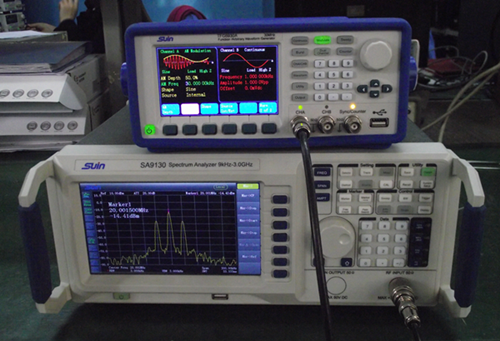Application of Spectrum Analyzer
Mar. 04, 2024
Application of Spectrum Analyzer
In the realm of modern technology, where wireless communication, electronics, and telecommunications dominate, the importance of spectrum analyzers cannot be overstated. These sophisticated instruments are pivotal in analyzing and understanding the frequency spectrum, facilitating numerous applications across various industries. From telecommunications to aerospace, from research laboratories to manufacturing plants, spectrum analyzers play a vital role in ensuring optimal performance, troubleshooting, and compliance with regulatory standards.
Understanding Spectrum Analyzers: At its core, a spectrum analyzer is a device used to examine the frequency spectrum of signals. It takes an input signal and breaks it down into its constituent frequencies, displaying them in a graphical format known as a spectrum plot. This enables engineers and technicians to visualize the signal's frequency components, their strengths, and their distribution across the spectrum.
Applications in Telecommunications: In the telecommunications sector, spectrum analyzers are indispensable tools for characterizing and optimizing wireless communication systems. They are used in the design, deployment, and maintenance of radio frequency (RF) systems, including cellular networks, Wi-Fi, Bluetooth, and satellite communication systems. Spectrum analyzers aid in identifying interference sources, measuring signal quality, and ensuring compliance with regulatory standards such as spectral masks and emission limits.
RF Testing and Electronics: In electronics manufacturing and testing, spectrum analyzers are essential for verifying the performance of RF circuits and components. They enable engineers to analyze signals produced by amplifiers, oscillators, filters, and other RF devices, ensuring they meet design specifications. Spectrum analyzers also play a crucial role in troubleshooting RF issues, identifying distortion, noise, and spurious signals that may degrade system performance.
Additional reading:Top Industries where NDT has Phenomenal Impact
Gelbo Flex Testing
Power Quality Analyser Comparison
Ultimate Guide to NDT: Methods, Tools, and Applications
Power quality benefits
Research and Development: In research laboratories and academia, spectrum analyzers are utilized for a wide range of applications spanning physics, chemistry, biology, and materials science. Researchers use these instruments to study electromagnetic phenomena, analyze spectra emitted by atoms and molecules, and investigate the properties of materials. Spectrum analyzers are instrumental in fields such as spectroscopy, plasma physics, and radio astronomy, providing valuable insights into the behavior of electromagnetic waves across different frequency ranges.
Aerospace and Defense: The aerospace and defense industries heavily rely on spectrum analyzers for various purposes, including radar testing, electronic warfare, and satellite communications. Spectrum analyzers are used to analyze radar waveforms, detect and analyze signals from electronic countermeasures, and verify the performance of communication systems onboard aircraft, ships, and satellites. These instruments play a critical role in ensuring the reliability, security, and effectiveness of military and aerospace systems.
Emerging Applications: As technology continues to evolve, spectrum analyzers find new applications in emerging fields such as Internet of Things (IoT), 5G network development, and autonomous vehicles. With the proliferation of wireless devices and the advent of ultra-wideband communication systems, spectrum analyzers are essential for characterizing complex signals and optimizing spectral efficiency. In the realm of autonomous vehicles, spectrum analyzers are utilized for testing and validating communication protocols, radar systems, and sensor networks essential for safe and reliable operation.
spectrum analyzers are versatile instruments with widespread applications across diverse industries. From telecommunications to aerospace, from research laboratories to manufacturing facilities, these tools play a pivotal role in analyzing and understanding the frequency spectrum. As technology advances and new challenges emerge, spectrum analyzers will continue to evolve, enabling engineers and researchers to push the boundaries of innovation and unlock new possibilities in the world of wireless communication and electronics.
72
0
0
None
None



Comments
All Comments (0)